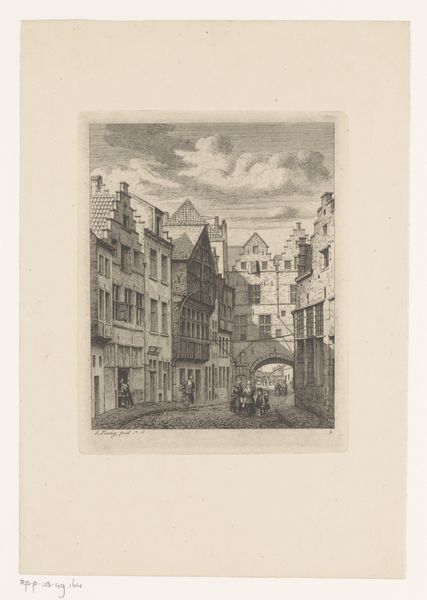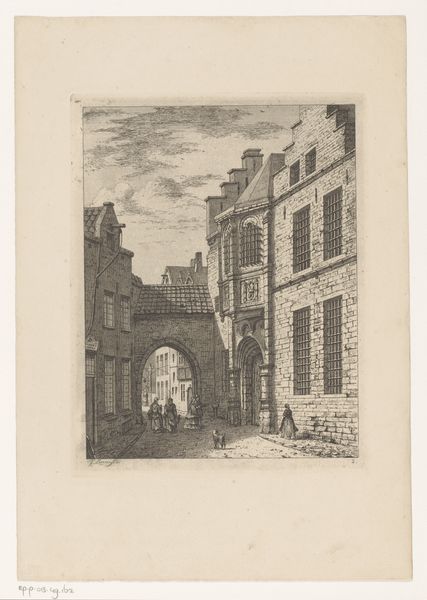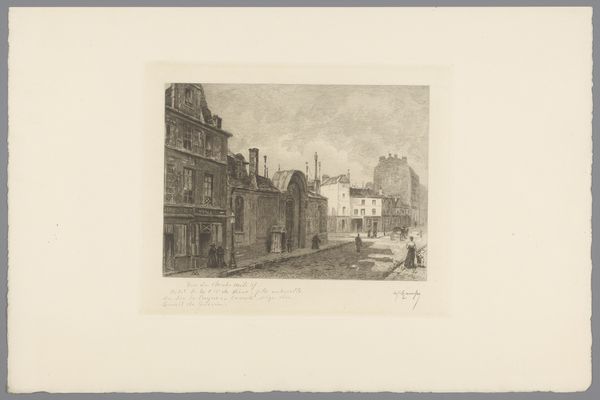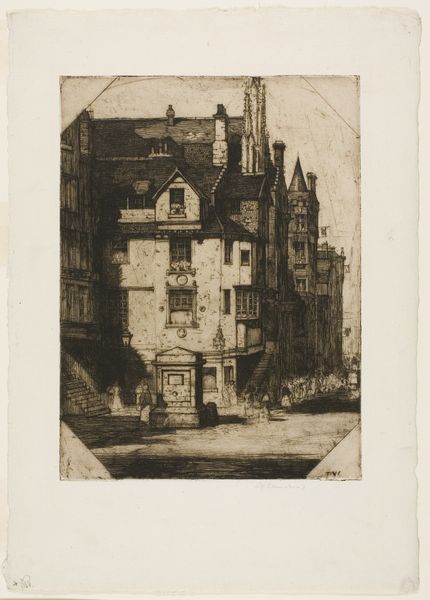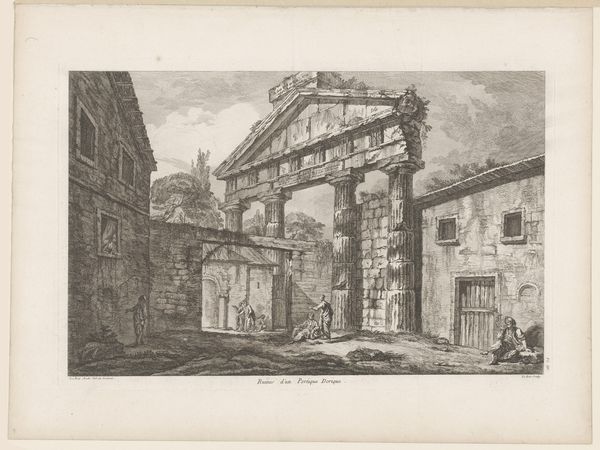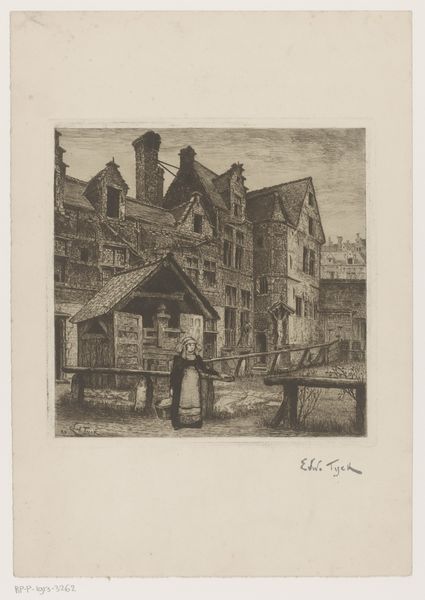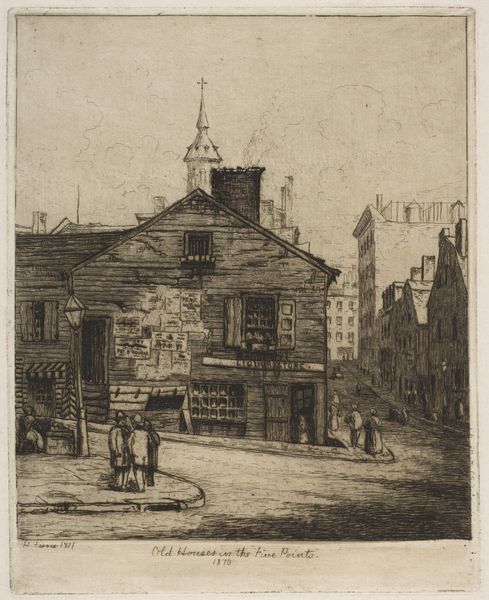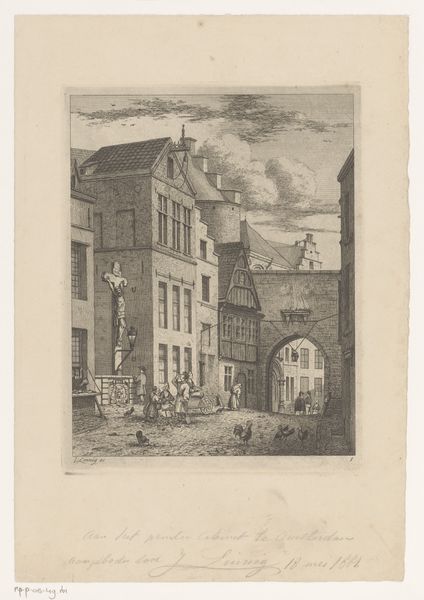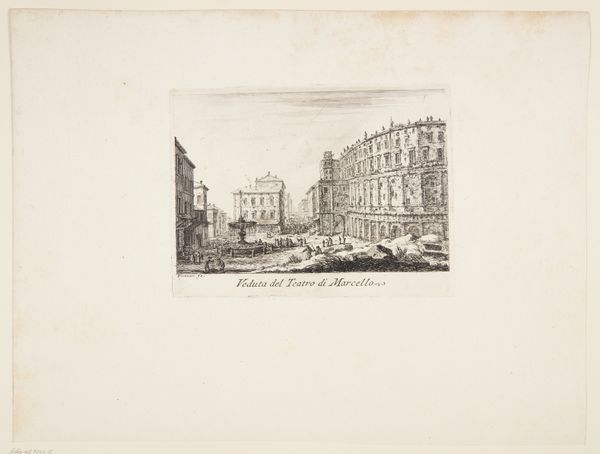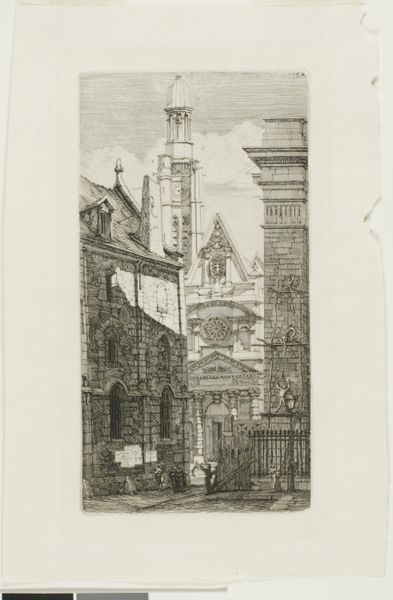
Gezicht op de Palingbrug in Antwerpen, vanaf de Vismarkt gezien 1868
0:00
0:00
Dimensions: height 185 mm, width 137 mm
Copyright: Rijks Museum: Open Domain
Curator: What a fascinating print. This is Jean Théodore Joseph Linnig's "View of the Eel Bridge in Antwerp, Seen from the Fish Market," etched in 1868. Editor: It's captivating—almost claustrophobic. The tight, looming buildings...it evokes a palpable sense of enclosure. Like the city's secrets are hiding within those walls. Curator: Linnig certainly captures the essence of Antwerp's urban fabric. The etching medium lends itself well to this densely packed scene. Do you notice how he uses linear detail to evoke the stonework's texture? The artist renders even light as something tangible, catching in cobblestones. It's almost cinematic. Editor: The bridge linking the structures adds an intriguing layer. The crucifix above—juxtaposed with the commerce below—creates a dichotomy between the sacred and the profane that persists even in contemporary global capitalism. I wonder, also, how different cityscapes impacted women. Curator: Precisely! A place between places and beliefs. And note the bridge is Palingbrug, the Eel Bridge! Perhaps the bridge connects both commerce and spiritual life and an everyday commodity. But I agree on the women. You see figures but can only wonder about the realities for female Antwerpeners. Editor: Absolutely, and the realism, coupled with its historical context, creates a kind of… visual archive. We are invited to question, What were the sociopolitical dynamics at play during the late 1860s? Did the Industrial Revolution exacerbate divisions based on gender and race? Curator: You're drawing attention to what remains invisible! And you can start to imagine the noise and smells of 1860s Antwerpen through that small window of visual observation the artist offers. Editor: Yes! And in that way, Linnig's work goes beyond documentation—it's an invitation to explore power structures encoded within seemingly benign scenes of urban life. It shows how those inequalities and social divides became deeply rooted within physical spaces. Curator: This etching leaves us pondering how spaces like the Eel Bridge acted as crossroads of commerce and religious contemplation and sites of negotiation, where citizens from all social levels encountered each other. The image has unlocked the door to a broader understanding of life then, even now. Editor: I appreciate you sharing those aspects. Thinking about that contrast between public and private spaces and what remains unseen... That’s powerful.
Comments
No comments
Be the first to comment and join the conversation on the ultimate creative platform.
